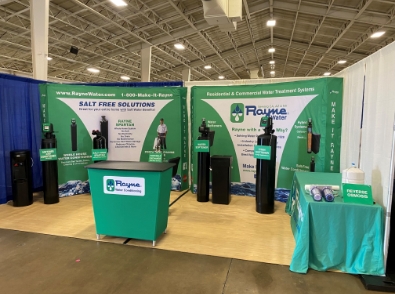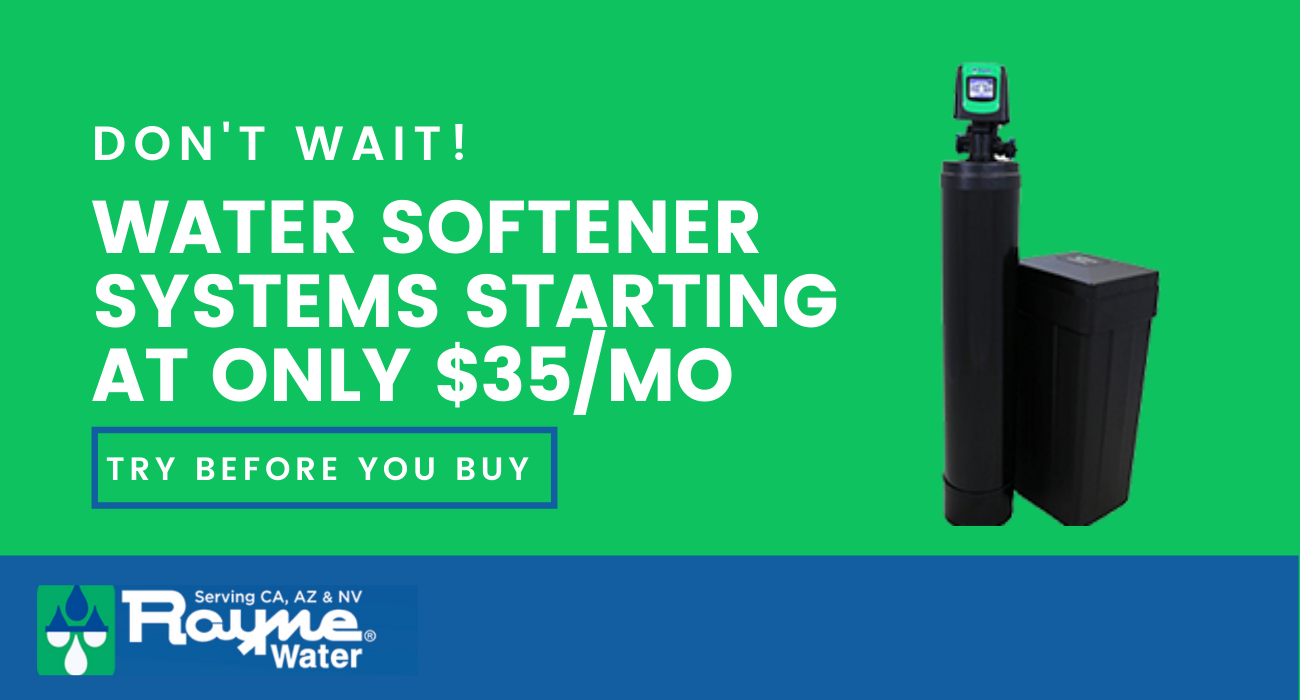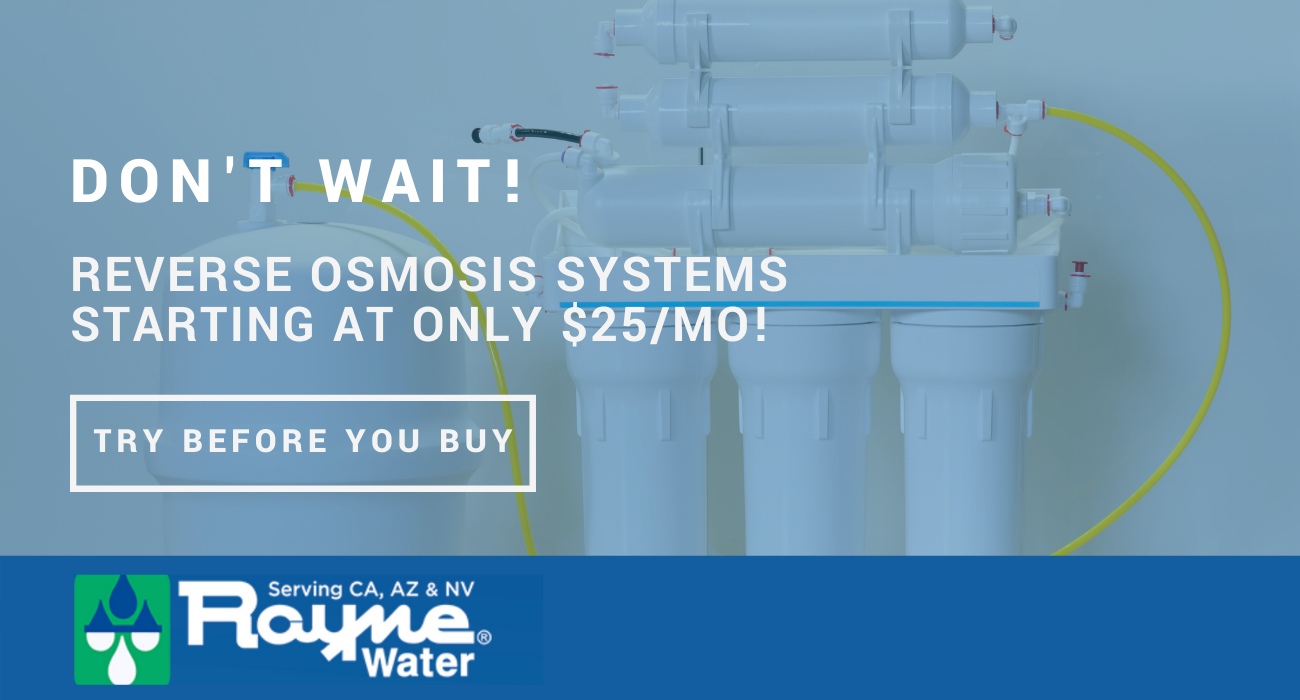*Reviewed by Ken Christopher, Senior Vice President at Rayne Dealership Corporation
Burbank is the suburb that local Angelenos can’t help but love. After all, Hollywood glitz and glamor extend north into Burbank, where you’re just as likely to encounter regular families as celebrities. While there’s certainly a lot to love about this Southern California town, the taste of the tap water might not be one of those things.
Whether you’re a long-time Burbank resident or just stopping by for a visit to the Warner Brothers Studio backlot, keep reading for a full guide to Burbank’s current water quality.1
We’ll discuss where tap water comes from, how the city treats it, what affects its quality, and how you can improve it at home. Grab a glass of water, and let’s dive in.
Burbank Water Sources
Your water has quite the journey to make before it arrives at your tap, especially in Burbank. The city doesn’t actually own any of the naturally occurring water underneath its soil. Instead, it purchases water from the Metropolitan Water District (MWD).2
The MWD is a wholesaler supplier of water across Southern California. While it receives its water from sources such as San Francisco Bay Delta ,3 its two primary sources:4
- Colorado River Aqueduct
- State Water Project
Burbank purchases water from the MWD. When this water is recycled and returned to aquifers beneath Burbank, the city receives additional groundwater credits.2
As a result, Burbank residents receive recycled water from three sources:2
- Stored Ground Water – 47% of the city’s water comes from untreated water in underground aquifers. This is water Burbank has purchased, imported, and added to its own aquifers. The city pumps this water from wells.
- State Water Project – 33% of the water comes from the Sacramento-San Joaquin Delta in Northern California. However, this source is environmentally vulnerable, which could significantly impact California’s future.
- Ground Water Credits – 20% of the city’s water also comes from underground aquifers, specifically in return for recycling the water it imports back into the city’s aquifers.
If all that sounds incredibly complicated, don’t worry. It is. Drought-prone California walks a fine line to continue providing enough water to its increasing population.

The Water Treatment Process
All of the sources of water noted above must undergo a treatment process before they are safe to drink. This process is essential to ensure that the Burbank water quality meets all necessary standards.
The source of the water affects how much the water must be treated. Groundwater doesn’t usually require as much treatment as source water, which comes from lakes, rivers, and streams. Regardless, the treatment process removes things like:5
- Chemicals
- Germs
- Sediment
- Radioactive particles
- Toxins
To deliver safe drinking water to their communities, treatment plants follow a five-step process:5
- Coagulation – Particles like dirt have a negative charge in water. To remove them, the treatment plant adds chemicals with a positive charge like salts, aluminum, or iron. These chemicals neutralize the negative charge and bind to the particles, increasing their size.
- Flocculation – The treatment plant uses additional chemicals and mixes the water so that the particles become larger and heavier. These groups of particles are called flocs.
- Sedimentation – These flocs are heavier than the water, so they settle at the bottom, separating from the clean water at the top.
- Filtration – The treatment plant refines the water at the top using filters with different pore sizes to remove dissolved particles, pollutants, and germs. They can also filter for odor and taste using activated carbon filters or reverse osmosis systems.
- Disinfection – The treatment plant disinfects the filtered water using chemicals like chlorine or using UV light or ozone. Any of these options disinfect the water, but the chlorine will also kill any germs in the pipes when the water travels through them. The treatment plant might also adjust the pH of the water for taste and to protect pipes. They will also usually add fluoride to support oral health.
After this five-step process is complete, clean and safe water travels through the pipes and to your faucet.
Water Quality in Burbank
Clean water is essential to protect your health. In less developed countries, untreated water can contain waterborne diseases such as typhoid fever or cholera. Even in the United States, untreated water can spread illnesses like:6
- Bacteria
- Parasites
- Viruses
Untreated water can also expose you to chemicals with disastrous effects on your health. Those effects depend on the levels of the chemicals, but they still exist. More specifically:6
- Low levels of exposure – Long-term exposure to even low levels of toxic chemicals can cause chronic conditions like cancer.
- High levels of exposure – High levels of certain chemicals can cause minor side effects like skin discoloration or severe side effects like damage to your organs, nervous system, reproductive system, and development.
Common chemical contaminants like arsenic, benzene, and uranium have federal limits regarding their concentration in tap water. There is a growing concern, however, about other chemicals, such as PFAs, or perfluoroalkyl and polyfluoroalkyl substances.7
What are PFAs?
PFAs are referred to as “forever chemicals” because they can remain in your body long-term and they take hundreds of years to break down in the environment. Their usage is widespread in products from cookware to dental floss. As a result, they contaminate many different sources of water.7
Exposure to these chemicals at levels higher than one part per trillion can increase your risk of developing a wide range of conditions from liver tumors to high cholesterol, and a 2021 estimate found that the majority of Americans drink tap water with concentrations of PFAs that are too high.7
In 2022, the Environmental Protection Agency (EPA) set more aggressive limits on PFAs in water. However, these guidelines are not legally binding.8 Because of these chemicals, locals in other cities are worried about the quality of their water. Even as nearby as Pasadena, people are thinking, “Is Pasadena water safe to drink?” Not just in Burbank but the Pasadena water restrictions and West Covina water restrictions have become more stringent because of PFAs.
While drinking water quality standards regarding PFAs are a major priority for the state of California, there are no standards yet for the maximum contaminant levels of PFAs.9
While emerging research into chemicals like PFAs is a concern, as of now, the water in Burbank meets or exceeds both state and federal standards for water quality. Each year Burbank Water and Power releases an annual report with data on over 162 elements it tests for in the city’s drinking water. Consumers can read through this water quality report and feel confident about the water they’re drinking.10
To continue providing safe and reliable water to all of its residents, the city of Burbank is also investing in its infrastructure. The majority of the city’s water pipes are over 80 years old. As a result, the city has begun to replace them. While this will ensure long-term access to clean water, it is one factor that has raised water costs for residents.11
How to Improve Water Quality at Home
The City of Burbank works hard to deliver clean water to its residents, but there are also many strategies you can use at home to improve your water quality. If you have specific concerns about contaminants in your water, you can use Rayne Water to determine both the water’s quality and any potential contaminants.
Even if the water is safe to drink, there are many reasons Burbank residents might want to treat it more thoroughly. For example, while disinfectants like chlorine keep the water safe, they can cause unfavorable tastes and smells as well as damage to hair, skin, and even your health.12
Moreover, water can become contaminated during the distribution process. This occurs when lead or copper pipes corrode or when there is a breach in the plumbing system. Additionally, byproducts of the treatment process like trihalomethanes can be bad for your health.6
Using a reverse osmosis system can protect your drinking water from bacteria and viruses.12 These systems may also improve water taste, which is one of the major concerns most Burbank locals have. While most drinking water might be safe, it isn’t always enjoyable.
Why? Most cities in Southern California have what’s called “hard water.”13
This means that the water contains higher levels of certain minerals like calcium and magnesium. While hard water isn’t dangerous outright, there are several reasons you might prefer “soft water.” The benefits of soft water include:14
- Cleanliness – Hard water can leave behind mineral buildup on pipes and soap scum on your clothes and dishes.
- Cost – Because hard water leaves behind this residue, you may end up spending more money on cleaning products and using more water.
When facing a drought, every ounce of water used matters. The simplest solution might be to use water softeners . The objective of a water softener is to remove excess calcium and magnesium as well as other minerals found in your water supply.
Discover the Benefits of High-Quality Water
Water quality matters. Whether you drink your eight cups a day or use the tap to make coffee or tea, you drink a lot of water. The city of Burbank works hard to ensure safe water is delivered to your pipes, despite all of the ecological issues Southern California faces.
While the water in Burbank meets both state and federal standards, concerns about Burbank water quality are understandable, considering the existence of chemicals like PFAs or even just the taste of the water you drink each and every day.
Now, you can take control of your water quality with Rayne Water .
From water softeners to reverse osmosis systems, Rayne Water’s products can help you enjoy the highest quality water.
Sources:
- LA Homes. What Is Burbank Known For? 5 Fun Facts About the History of Burbank, CA. https://www.lahomes.com/blog/burbank-fun-facts/
- The City of Burbank Water and Power. Water Sources. https://www.burbankwaterandpower.com/water/water-supply/water-sources
- The City of Burbank Water and Power. Water Quality Reports. https://www.burbankwaterandpower.com/water/water-supply/water-quality-reports
- LADWP. Metropolitan Water District of Southern California. https://www.ladwp.com/ladwp/faces/ladwp/aboutus/a-water/a-w-sourcesofsupply/a-w-sos-metropolitanwaterdistrictofsoutherncalifornia
- CDC. Water Treatment.
- EPA. Drinking Water. https://www.epa.gov/report-environment/drinking-water
- Scientific American. Forever Chemicals Are Widespread in U.S. Drinking Water. https://www.scientificamerican.com/article/forever-chemicals-are-widespread-in-u-s-drinking-water/
- Harvard School of Public Health. Stricter federal guidelines on ‘forever chemicals’ in drinking water pose challenges. https://www.hsph.harvard.edu/news/features/stricter-federal-guidelines-on-forever-chemicals-in-drinking-water-pose-challenges/
- California Water Boards. PFAS: Per- and Polyfluoroalkyl Substances. https://www.waterboards.ca.gov/drinking_water/certlic/drinkingwater/pfas.html
- Burbank Water and Power. Currents . https://www.burbankwaterandpower.com/images/administrative/downloads/BWP_Currents_July2022_Final.pdf
- City of Burbank. Op Ed: Ensuring Burbank’s Residents Continue to Have Access to Safe, Clean Water. https://www.burbankca.gov/newsroom/-/newsdetail/20124/ensuring-burbank-s-residents-continue-to-have-access-to-safe-clean-water
- Washington Post. How to Test and Improve Your Tap Water. https://www.washingtonpost.com/business/2022/08/23/how-test-improve-your-tap-water/
- City of Anaheim. Water Hardness. https://www.anaheim.net/672/Water-Hardness
- Rayne Water. Is it Better to Drink Soft or Hard Water? https://www.raynewater.com/blog/is-it-better-to-drink-soft-or-hard-water/







